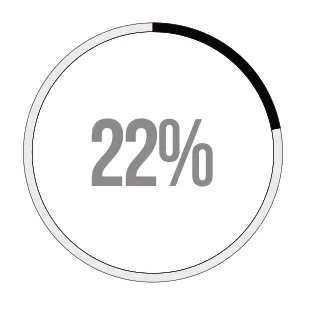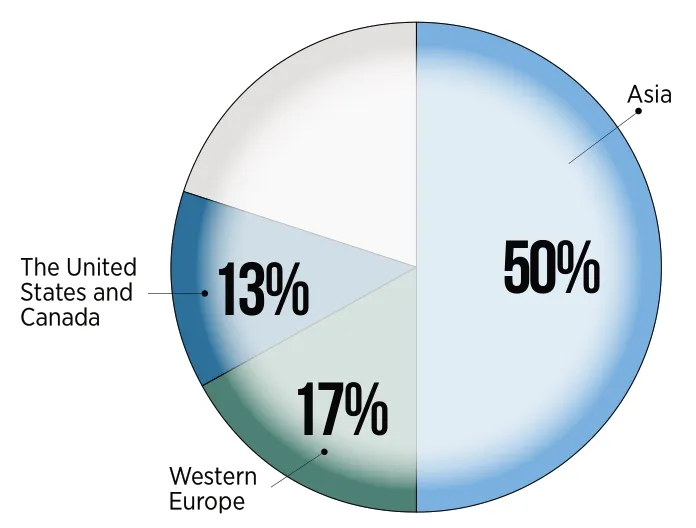Fueling the Clean Energy Transition
2022-06-23ByTaoZihui
By Tao Zihui
“We must exert every effort we possibly can to change the gloomy status quo.”
Climate change is a long-term battle for the international community;what the world needs now more than ever is a new“green”agenda.
Like many a multilateral gathering over the past few years,the 2022 Annual Conference of the Boao Forum for Asia (BFA),a platform that promotes regional economic integration,placed special emphasis on low-carbon development.The event,running from April 20 to 22 in Boao,Hainan Province,homed in on green and sustainable growth as the world is reeling from the COVID-19 pandemic and global climate change.
China received much attention.Among all the ambitious commitments on the global stage,the country’s“30-60”decarbonization goals,namely to peak carbon emissions before 2030 and achieve carbon neutrality before 2060,stand out.
For China,carbon neutrality—requiring technological revolution—is not only a goal,but also a desired result combining the right policies and the necessary capital,including individuals reducing their carbon footprint,according to Li Lei,vice president and regional head of North Asia of SABIC.The Saudi Arabia-headquartered diversified chemical company is a member of the BFA.
A Clean Break
“To address sustainable development challenges,innovation is the most fundamental logic and must become the strong competitive advantage on which companies can lean,”Li said.
Hydrogen energy development,certainly,is an essential component of this kind of innovation.
Depending on the source from which it is produced,hydrogen can be gray,blue or green;green hydrogen is the only type produced in a climate-neutral manner that can reduce emissions.
Green hydrogen is produced by using clean energy from renewable energy sources,such as solar or wind power,to split water into two hydrogen atoms and one oxygen atom through a process called electrolysis.As it is considered a superior clean energy source for the future,China is accelerating its deployment nationwide.
The country produced roughly 33 million tons of hydrogen in 2021,making it the world’s largest producer thereof.By 2035,the proportion of hydrogen produced from renewable energy sources will increase significantly,according to a plan on the development of hydrogen for the 2021-35 period.The document was jointly released by the National Development and Reform Commission and the National Energy Administration on March 23.
By 2025,China intends to have all related core technologies and manufacturing processes in place,it added.
Nevertheless,the development of hydrogen energy as of yet has a long and winding road ahead.Many worry about its costs and whether it will prove competitive in the market.Easy access to investment and financing opportunities are essential to the sound demand and supply of green hydrogen energy,participants said at a BFA sub-forum on the issue on April 20.
Wang Naixiang,chairman of China Beijing Green Exchange,pointed out that the development of hydrogen must break through the bottlenecks in investment and financing.It is estimated that in 2030,hydrogen energy will require US$700 billion in direct investment;the future holds a trillion-level market.Further statistics predict that under the scenario of achieving net-zero emissions,hydrogen energy will account for 22 percent of the global energy consumption structure in 2050,he added.
Deng Jianling,general manager of China Huaneng Group Co.Ltd.,believes that with technological advancements,the market will surely become more open to the energy.

The country produced roughly33 million tonsof hydrogen in 2021,making it the world’s largest producer thereof.

Further statistics predict that under the scenario of achieving net-zero emissions,hydrogen energy will account for22 percentof the global energy consumption structure in 2050.

Despite the COVID-19 pandemic,Asian countries have continued their mobilization of financial resources for green and sustainable initiatives as climate financing across Asia in 2020 accounted for some50 percentof the global total,compared with17 percentfor Western Europe and13 percentfor the United States and Canada,according to a report citing the latest estimates from the Climate Policy Initiative released by the BFA on April 20.

A worker assembles an engine powered by a hydrogen fuel cell at a new energy company in Qingdao,Shandong Province,on March 29,2022.(VCG)

Shuttle buses dedicated to the Beijing 2022 Winter Olympics queue at a hydrogen refueling station developed by Chinese energy giant Sinopec in Yanqing,Beijing,on January 31,2022. (VCG)
“I remain very optimistic about its prospects,”Deng said.
Continued innovation is crucial to industrial progress and global economies should therefore intensify collaboration,Martina Merz,CEO of German conglomerate ThyssenKrupp,told the subforum.“Green transition relates to the success of a country and even that of the world.We must exert every effort we possibly can to change the gloomy status quo,”she said.
Progress and Prospects
Despite the COVID-19 pandemic,Asian countries have continued their mobilization of financial resources for green and sustainable initiatives as climate financing across Asia in 2020 accounted for some 50 percent of the global total,compared with 17 percent for Western Europe and 13 percent for the United States and Canada,according to a report citing the latest estimates from the Climate Policy Initiative released by the BFA on April 20.
Aiming to enhance green governance,Asian authorities have set up high-level collectives and committees overseeing the formulation and implementation of national net-zero strategies,defining decarbonization goals and drafting roadmaps to meet these targets,as well as establishing carbon emission trading systems,the report read.
The Green Finance Committee of the China Society for Finance and Banking in late 2021 issued a report predicting China will need 487 trillion yuan (US$75.53 trillion) in green and low-carbon investment over the next 30 years.“In the international market,this amount will be even larger,and it may require hundreds of trillions of dollars in green and low-carbon investment,”committee chairman Ma Jun said at the subforum.
China,while maintaining an effective policy mix to spur green investment,is working toward a mechanism that supports financing activities with a market-based approach.It also helps other developing countries cope with climate change and promote global green transition.
In 2016,the People’s Bank of China,the country’s central bank,led crossdepartment coordination to introduce a guideline on the creation of a green financial system,marking the world’s first policy framework of this kind approved and established by central government departments.
“China’s carbon neutrality commitment to the world,which is now being followed by the introduction of a series of supportive policies and initiatives,shows its unequivocal resolution in this brand-new field,”SABIC’s Li said.
Zhou Xiaochuan,vice chairman of the BFA and China’s chief representative to the organization,said the government should guide businesses,investors and financial institutions to take a rational and realistic approach to investing in carbon mitigation projects and achieve the established targets according to well-conceived roadmaps and timetables.
“It’s not just about emission reductions or carbon neutral technology,”Zhu Min,former deputy managing director of the International Monetary Fund,told the subforum.“It’s about a change in the social mindset,from production to lifestyle.Only education can cultivate a new generation.It’s all about society.”
